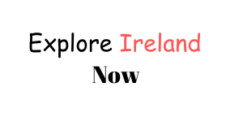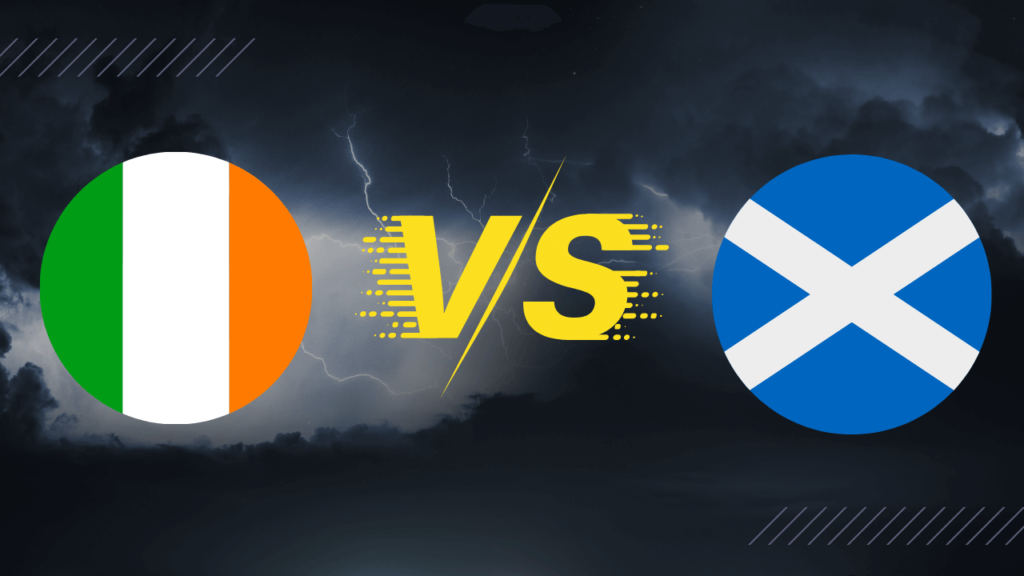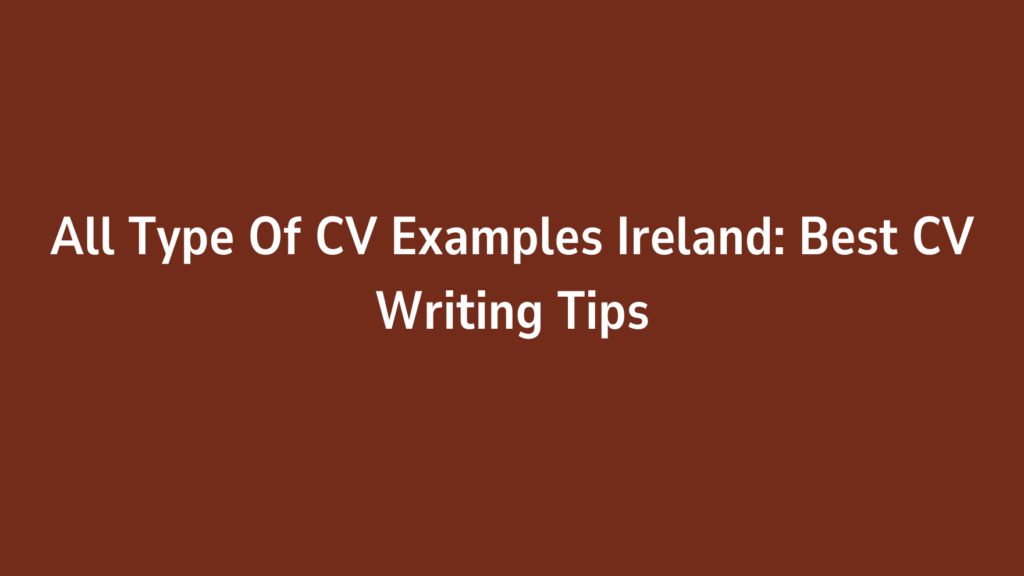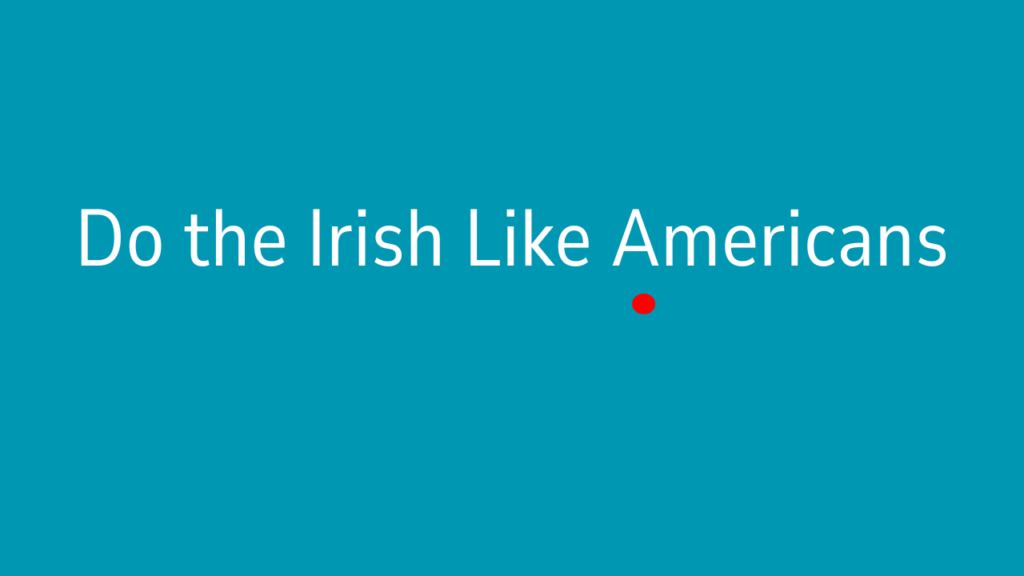Ireland and Scotland share a long history and cultural connections. Both countries are known for their rich traditions, music, languages, and breathtaking landscapes. However, despite their similarities, they are distinct in many ways. This article explores the differences and similarities between Irish and Scottish cultures, traditions, history, and lifestyles in a detailed yet simple manner.
Geography and Landscape Difference Between Ireland vs Scotland

| Feature | Ireland | Scotland |
|---|---|---|
| Location | Western Europe, surrounded by the Atlantic Ocean | Northern part of the United Kingdom, bordered by the Atlantic Ocean |
| Size | 84,421 square kilometers | 77,933 square kilometers |
| Mainland vs Islands | One island with no significant offshore islands | Mainland and over 700 islands, including the Inner and Outer Hebrides, Orkney, and Shetland Isles |
| Highest Mountain | Carrauntoohil (1,038 meters / 3,406 feet) | Ben Nevis (1,345 meters / 4,413 feet) |
| Mountain Ranges | – Macgillycuddy’s Reeks – Wicklow Mountains – Galtee Mountains | – Scottish Highlands – Cairngorms – Southern Uplands |
| Famous Rivers | – River Shannon (longest river) – River Liffey – River Boyne | – River Clyde – River Tay – River Spey |
| Famous Lakes (Lochs) | – Lough Neagh – Lough Corrib – Lough Derg | – Loch Ness – Loch Lomond – Loch Tay |
| Coastline Length | 7,500 kilometers | 18,000 kilometers |
| Notable Coastal Features | – Cliffs of Moher – Wild Atlantic Way – Inch Beach | – Isle of Skye – Orkney Islands – Shetland Islands |
| Climate | Mild, temperate maritime climate – Rainfall is more frequent on the west coast | Cool, temperate maritime climate – Wetter and colder in the Highlands and Islands |
| Winter Temperatures | 5°C (41°F) on average | Cooler, with temperatures lower in the Highlands and North |
| Summer Temperatures | 15°C (59°F) on average | 12-15°C (54-59°F) on average |
| Snowfall | Rare, mainly in inland and higher altitudes | More frequent, especially in the Highlands |
Key Points:
- Ireland:
- Gently rolling hills and valleys, with less extreme mountain ranges.
- Famous for its extensive coastline, including the Wild Atlantic Way.
- Milder climate with more consistent rainfall.
- Scotland:
- Rugged mountainous terrain, particularly in the Scottish Highlands.
- More varied coastlines with cliffs, fjords, and numerous islands.
- Colder winters with more frequent snowfall, especially in the northern and mountainous regions.
History and Cultural Differences Between Ireland vs Scotland

Ireland and Scotland, while sharing some similarities, have distinct histories and cultures shaped by different influences.
| Aspect | Ireland | Scotland |
|---|---|---|
| Historical Roots | Celts, Norman invasion, English rule | Celts, Roman influence, Viking raids |
| Independence | Gained independence in 1922 | Remained part of the UK, devolution in 1999 |
| Language | Irish Gaelic, English | Scottish Gaelic, Scots, English |
| Religion | Predominantly Catholic | Predominantly Protestant (Church of Scotland) |
| Traditional Music | Irish folk music, Uilleann pipes | Scottish bagpipes, ceilidh music |
| National Symbol | Shamrock, harp | Thistle, Saltire flag |
| Cuisine | Potatoes, Irish stew, soda bread | Haggis, shortbread, whisky |
Key Cultural Differences:
- Religion: Ireland has a strong Catholic influence, while Scotland is primarily Protestant.
- Language: Irish Gaelic is still spoken in parts of Ireland, whereas Scottish Gaelic is less common but still part of Scotland’s heritage.
Government and Politics Differences Between Ireland vs Scotland
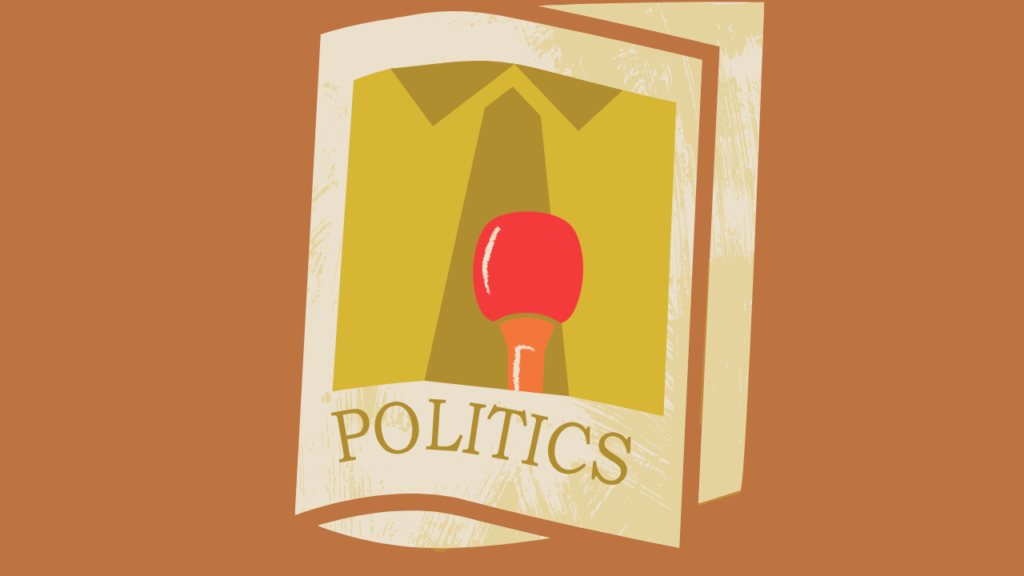
| Aspect | Ireland | Scotland |
|---|---|---|
| Political Status | – Republic of Ireland: Fully independent since 1949. – Northern Ireland: Part of the United Kingdom. | – Part of the United Kingdom: A devolved government with its own parliament for domestic affairs. |
| Form of Government | – Parliamentary Republic: The President is the head of state. – Prime Minister (Taoiseach): Head of government. | – Constitutional Monarchy: The Queen (or King) is the ceremonial head of state. – First Minister: Head of government in the Scottish Parliament. |
| Head of State | – President of Ireland: Elected every seven years. A largely ceremonial role. | – Monarch of the United Kingdom: King or Queen, with a ceremonial role in Scotland as part of the UK. |
| Head of Government | – Taoiseach: Elected by the parliament and responsible for running the government. | – First Minister of Scotland: Elected by the Scottish Parliament and responsible for leading the Scottish Government. |
| Parliament | – Oireachtas: The national parliament, consisting of two houses: 1. Dáil Éireann (Lower House). 2. Seanad Éireann (Senate). | – Scottish Parliament: A unicameral legislature with 129 members. – Devolution: Powers are devolved to the Scottish Parliament, but Westminster retains control over certain areas. |
| Political Parties | – Fianna Fáil: Center to center-right party. – Fine Gael: Center-right party, traditionally more pro-European Union. – Sinn Féin: Left-wing, associated with Irish nationalism. – Labour Party: Center-left. | – Scottish National Party (SNP): Center-left, advocates for Scottish independence. – Labour Party: Traditionally center-left. – Conservative Party: Center-right, supportive of union with the UK. – Liberal Democrats: Centrist, pro-devolution. |
| Voting System | – Proportional Representation: Used in general elections and by-elections. – Single Transferable Vote: Aimed at ensuring fair representation for minority parties. | – Mixed Member Proportional: Combines first-past-the-post with proportional representation for a balance of regional and constituency representation. |
| Devolution | – No Devolution: Ireland is fully independent, and all political power is centralized in Dublin. | – Devolved Powers: Scottish Parliament has power over areas like education, health, and transportation, but key issues like defense and foreign policy remain controlled by Westminster. |
| Independence Movement | – Republic of Ireland: Achieved independence from the UK in 1922. – Northern Ireland: Remains part of the UK and has its own governance structure. | – Scottish Independence Movement: Advocates for Scotland to leave the UK and become an independent country. The 2014 referendum resulted in a vote to remain in the UK, but calls for another referendum persist. |
| Constitution | – No formal written constitution: The Irish Constitution (Bunreacht na hÉireann) is the key legal document, which can be amended by referendum. | – No written constitution: Scotland follows constitutional conventions and legal principles established by both the UK Parliament and the Scottish Parliament. |
| Legal System | – Common Law System: Based on English law but with some influences from civil law. – Supreme Court of Ireland: Highest court of appeal. | – Mixed Legal System: Primarily based on Scots law, which has its roots in Roman law, but still incorporates aspects of English law due to its position within the UK. – Court of Session: Highest court in Scotland for civil cases. |
| International Relations | – Independent Foreign Policy: Ireland is a neutral country and is part of the European Union (until 2020 when it remained EU despite Brexit). | – Foreign Policy Controlled by UK: Scotland does not have its own foreign policy and is represented by the UK in international matters. – Scotland has a role in the Commonwealth and EU relations, but the UK government controls external affairs. |
| Defense and Military | – No Standing Army: Ireland maintains a defense force for neutrality and peacekeeping missions. – Neutral Country: Does not participate in military alliances such as NATO. | – Part of UK Defense: Defense is a matter handled by the UK government, with Scotland hosting important military bases. – Calls for Scottish Independence: Some independence movements advocate for Scotland to have its own defense forces |
Language and Dialects Differences Between Ireland vs Scotland

| Aspect | Ireland | Scotland |
|---|---|---|
| Official Languages | – Irish (Gaeilge): One of the official languages, though not widely spoken in daily life. – English: The dominant language used for communication. | – English: The primary language spoken across the country. – Scots: Recognized as a regional language, spoken by some in the Lowlands. – Scottish Gaelic: Spoken by a small minority, particularly in the Highlands and Islands. |
| Prevalence of Irish (Gaeilge) | – Less commonly spoken today: Irish is taught in schools and used in government documents, but its daily use is limited to rural areas. – Revitalization efforts: Many initiatives exist to promote Irish language and culture. | – Not widely spoken: There is no significant use of Irish (Gaeilge) in Scotland, except among some Irish immigrants and their descendants. |
| Prevalence of Scots | – No official recognition: Scots is not an official language in Ireland, though some Irish people use it in informal settings. | – Widely spoken in certain regions: Predominantly in the Lowlands, Scots is used in everyday conversation by many people, although it is not an official language. |
| Prevalence of Scottish Gaelic | – Rarely spoken: While Irish and Scottish Gaelic share roots, Scottish Gaelic is not commonly spoken in Ireland. | – Spoken in the Highlands and Islands: Scottish Gaelic has a small but dedicated number of speakers. Efforts are ongoing to preserve and revitalize it, including language programs and media. |
| Language Learning and Education | – Compulsory in Schools: Irish is a compulsory subject in primary and secondary schools, though proficiency among students varies. | – Scots and Gaelic Optional: Scots is not widely taught in schools, but Scottish Gaelic is offered in certain regions and schools, especially in the Highlands. |
| Influence of English | – Dominant language: English is the primary language of commerce, government, and daily communication in Ireland. | – Dominant language: English is also the primary language spoken throughout Scotland. |
| Regional Accents | – Distinct regional accents: Accents vary between different areas of Ireland (e.g., Dublin, Cork, Galway), and these can sometimes indicate regional identity. | – Distinct regional accents: Scots have a variety of accents depending on the region, such as Glaswegian, Highland, and Edinburgh accents. |
| Common Phrases or Words | – “Craic”: Refers to fun, gossip, or good times. – “Sláinte”: A toast meaning “cheers.” | – “Aye”: Yes (common in Scotland). – “Ken”: Know, e.g., “Do you ken?” meaning “Do you know?” |
| Influence of Other Languages | – Irish influence on English: Irish-English has unique expressions, and some words are borrowed from Irish. | – Influence of Scots and Gaelic: Scottish English has words from both Scots and Gaelic, influencing daily vocabulary. |
| Language Preservation Efforts | – Strong push for Irish: The Irish government and various cultural organizations promote the use of Irish through schools, media, and literature. | – Revitalization of Gaelic: Scottish Gaelic has seen renewed efforts for preservation through media, education, and cultural initiatives, but it remains a minority language |
Economy and Industry Differences Between Ireland vs Scotland
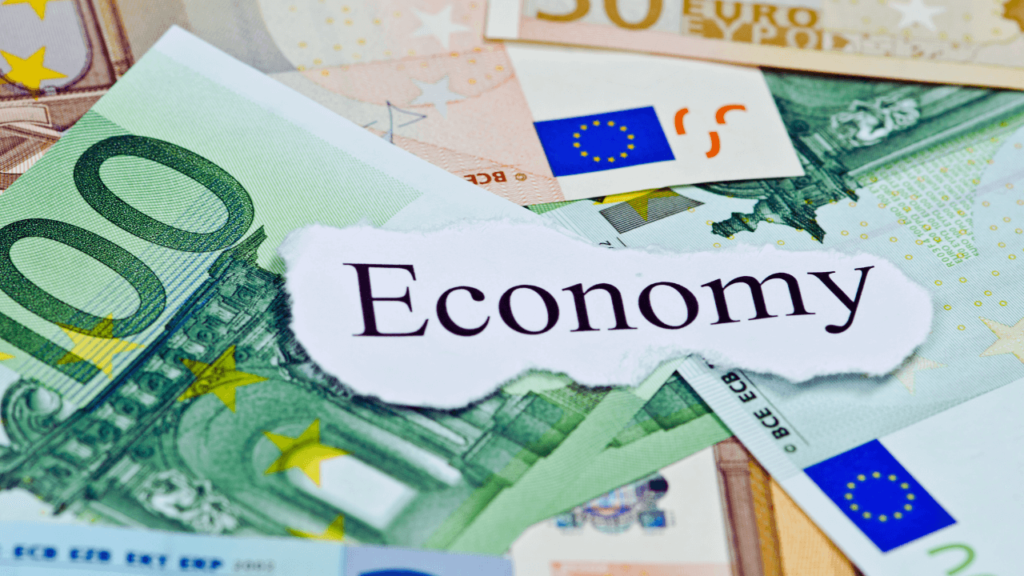
| Aspect | Ireland | Scotland |
|---|---|---|
| Economic System | – Market economy: Driven by exports, multinational companies, and technology. – Open economy: Highly integrated with global markets, particularly the European Union (EU) and the United States. | – Market economy: Like Ireland, Scotland has a market-driven economy, but is more influenced by the UK economy. – Devolution: Scotland has limited control over some economic policies, but key decisions remain with the UK government. |
| Gross Domestic Product (GDP) | – High GDP per capita: Ireland has a very high GDP per capita, largely due to its thriving export sector and foreign direct investment (FDI). | – Lower GDP per capita compared to Ireland: While Scotland has a strong economy, its GDP per capita is generally lower than Ireland’s, influenced by its integration within the UK’s broader economic framework. |
| Key Industries | – Technology and IT: Ireland is home to major tech companies like Google, Facebook, and Apple. – Pharmaceuticals and Biotech: Ireland is a leading hub for the global pharmaceutical industry. – Agriculture and Food: Dairy and meat production, especially beef, are key exports. – Financial Services: Dublin is an important European financial center. | – Oil and Gas: Scotland’s economy is significantly influenced by North Sea oil and gas production, centered in Aberdeen. – Financial Services: Edinburgh is a major financial hub in the UK, home to numerous banks and investment firms. – Tourism: Scotland’s tourism industry thrives, particularly around its historical sites and natural landscapes. – Whisky Production: Scotland is globally renowned for its whisky, with an extensive distillery industry. |
| Major Exports | – Pharmaceuticals: Medicinal products and chemicals are major exports. – Technology and Electronics: Software, IT services, and high-tech electronics are vital. – Agricultural Products: Beef, dairy, and other food products. | – Oil and Gas: Scotland is a major exporter of oil and gas. – Whisky: One of Scotland’s most iconic exports, whisky has a global market. – Agricultural Products: Including whisky, seafood, and high-quality meats. |
| Unemployment Rate | – Relatively low: Unemployment has been low in recent years, although it has fluctuated with economic cycles. | – Moderate: Unemployment tends to be slightly higher in Scotland compared to Ireland, though it is still relatively low by international standards. |
| Economic Growth | – Strong Growth: Ireland has had a strong and consistent growth rate, driven by foreign investment, particularly from the tech and pharmaceutical industries. – EU Membership: Being a member of the EU has also allowed Ireland to benefit from trade and investment flows within the union. | – Stable but Slower Growth: Scotland’s economic growth is often slower than that of Ireland, in part due to its reliance on the broader UK economy and the impact of Brexit on the economy. |
| Government Spending and Taxation | – Corporate Tax Rates: Ireland has one of the lowest corporate tax rates in Europe (12.5%), attracting multinational companies. – Income Tax: Ireland has a progressive income tax system, though it also has a relatively high cost of living. | – Higher Taxation: Scotland has some control over taxation policies, with a slightly higher income tax rate than the rest of the UK. However, its fiscal policy is influenced by the UK government. – Public Sector Spending: Scotland benefits from funding via the UK, but has some autonomy in spending on health, education, and social services. |
| Trade Relationships | – EU and US: Ireland is highly dependent on the European Union for trade, as well as the United States, where many Irish companies have significant operations. – Exports to UK: Trade with the UK remains important, though Brexit has led to some challenges. | – UK and EU: Scotland’s trade relationships are influenced by its place within the UK, though it also has strong economic ties to the EU, especially in sectors like agriculture, whisky, and energy. |
| Brexit Impact | – Brexit Challenges: Ireland has faced challenges due to its proximity to the UK, particularly in trade and border issues. However, Ireland’s strong EU ties have mitigated some of the impact. | – More direct impact: Scotland was largely in favor of remaining in the EU, and Brexit has had a more significant economic impact on its trade, particularly with the EU and agricultural exports. |
| Cost of Living | – Relatively high: The cost of living in Ireland, particularly in cities like Dublin, has risen sharply in recent years due to high demand for housing and a growing economy. | – Moderate: Scotland generally has a lower cost of living compared to southern England, though cities like Edinburgh and Glasgow have seen increases in housing prices. |
Sports Differences Between Ireland vs Scotland
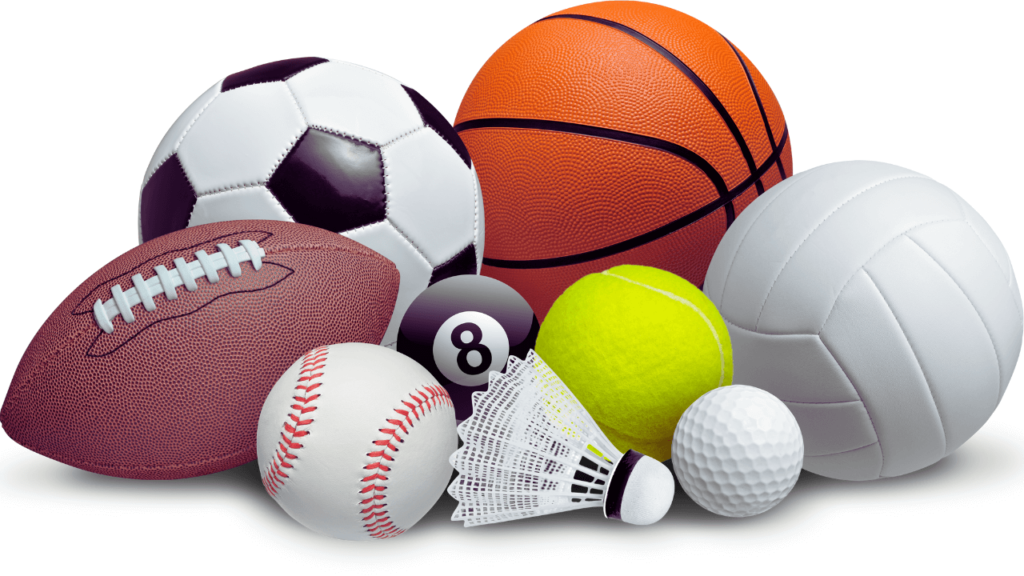
| Aspect | Ireland | Scotland |
|---|---|---|
| Popular Sports | – Gaelic Football: The most popular sport in Ireland, with a huge following, especially in rural areas. – Hurling: Another traditional sport with deep roots in Irish culture. – Rugby Union: Growing in popularity, with strong national teams. – Soccer: Popular, especially with international leagues. – Horse Racing: A significant part of Irish sporting culture. | – Football (Soccer): The most popular sport in Scotland, with a passionate fan base. – Rugby Union: Strong tradition and competition, particularly with their national team. – Golf: Scotland is known as the birthplace of golf, with many world-renowned courses. – Shinty: A traditional Scottish sport similar to hurling, played primarily in the Highlands. – Tennis: Gaining popularity, with notable Scottish players like Andy Murray. |
| National Teams | – Football: The Republic of Ireland National Football Team competes in international tournaments like the UEFA European Championship and FIFA World Cup. – Rugby: The Ireland Rugby Union Team is one of the top teams in the world, with frequent victories in Six Nations Championship. – Gaelic Football: National teams compete in the All-Ireland Senior Football Championship. – Hurling: National teams play in the All-Ireland Senior Hurling Championship. | – Football: The Scotland National Football Team participates in major international tournaments, though success has been limited. – Rugby: The Scotland Rugby Union Team is one of the Six Nations teams, known for its competitive performances. – Golf: Scotland is home to some of the world’s top players and prestigious tournaments, including the Open Championship. – Shinty: Traditional teams compete in Shinty-Camanachd Cup and other regional tournaments. |
| International Success | – Football: The Irish team has qualified for multiple UEFA European Championships and FIFA World Cups, with their best performance being in the 2002 FIFA World Cup. – Rugby: Ireland has won multiple Six Nations Championship titles and has reached the Rugby World Cup quarter-finals regularly. – Gaelic Football and Hurling: Ireland’s teams dominate these sports, with strong performances in All-Ireland Championships. | – Football: Scotland has had limited success in international tournaments, with notable appearances in the FIFA World Cup and UEFA European Championship. – Rugby: Scotland is competitive in the Six Nations Championship but has not won the Rugby World Cup. – Golf: Scotland has produced some of the world’s best golfers, including Sir Jackie Stewart and Paul Lawrie, and continues to excel in the sport. – Shinty: While traditionally significant in Scotland, it has a smaller international following. |
| Traditional Sports | – Gaelic Football: A unique sport, blending aspects of football and rugby, played primarily in Ireland. – Hurling: Considered one of the oldest field games in the world, it remains a core part of Irish culture. | – Shinty: Similar to hurling, shinty is a traditional Scottish sport with historical roots in the Highlands. – Curling: Played on ice, it is especially popular in the winter months and is part of Scottish heritage. |
| Sports Infrastructure | – Stadiums: Croke Park in Dublin is the largest stadium in Ireland and hosts Gaelic games. – Rugby and Soccer: Aviva Stadium in Dublin is the primary venue for rugby and football matches. – Racecourses: Ireland has several prominent racecourses, including Leopardstown and Punchestown. | – Stadiums: Hampden Park in Glasgow is Scotland’s national stadium for football. – Rugby and Golf: Murrayfield Stadium in Edinburgh hosts rugby games, while St Andrews is the iconic home of golf. – Curling Arenas: Scotland has world-class curling facilities, with venues like The Curling Rink at Dewars Centre in Perth. |
| Sports Culture | – Passionate Fans: Irish fans are known for their enthusiasm, especially in Gaelic football and rugby. – Club Rivalries: Intense rivalries in Gaelic football (e.g., Dublin vs Kerry) and rugby. – Community Involvement: Gaelic games are deeply embedded in Irish communities, with local clubs promoting sports at all levels. | – Football Culture: Football rivalries are fierce, particularly between Celtic and Rangers (Old Firm Derby). – Golf Heritage: Scotland’s golf culture is deeply rooted, with many iconic courses and prestigious events. – Rugby Passion: Rugby fans in Scotland are passionate, especially during the Six Nations Championship |
Food and Drink Differences Between Ireland vs Scotland

| Aspect | Ireland | Scotland |
|---|---|---|
| Traditional Dishes | – Irish Stew: A hearty dish made with lamb, potatoes, carrots, onions, and parsley. – Boxty: Traditional potato pancake, often served with various fillings. – Colcannon: A mash of potatoes, cabbage, and butter, often served with meats. – Coddle: A comforting stew of sausages, bacon, and potatoes. – Seafood Chowder: A creamy soup made with fresh seafood, especially along the coast. | – Haggis: A traditional Scottish dish made from sheep’s heart, liver, and lungs, cooked with onions, suet, and oats. – Scotch Pie: A small, round pastry filled with minced meat and gravy. – Cullen Skink: A creamy soup made with smoked haddock, potatoes, and onions, popular in the northeast. – Neeps and Tatties: Mashed turnips and potatoes, traditionally served with haggis. – Arbroath Smokie: A traditional smoked fish, typically haddock, originating from Arbroath. |
| Key Ingredients | – Potatoes: Essential in many Irish dishes, from boxty to colcannon. – Lamb: Often used in Irish stew and other traditional dishes. – Seafood: Fresh fish and shellfish from Ireland’s coast are common in dishes like seafood chowder. – Cabbage: Commonly paired with potatoes and meats. – Dairy: Irish butter and cream are widely used in cooking. | – Oats: A key ingredient in many Scottish dishes, especially in haggis and porridge. – Lamb and Beef: Often used in stews, pies, and roasts. – Salmon: A staple of Scottish cuisine, particularly smoked or fresh from rivers like the River Tay. – Barley: Used in Scotch whisky production and in traditional porridge. – Turnips: Commonly used in dishes like neeps and tatties. |
| Beverages | – Irish Coffee: A blend of coffee, whiskey, sugar, and cream. – Guinness: The famous Irish stout, brewed in Dublin. – Irish Whiskey: Known for being smooth and triple-distilled, brands like Jameson are internationally recognized. – Cider: Ireland has a long history of producing traditional ciders, especially from the Armagh region. | – Scotch Whisky: One of Scotland’s most famous exports, made primarily from barley. It comes in varieties like single malt, blended, and peated. – Irn-Bru: A bright orange soda, often considered Scotland’s national drink. – Scottish Ale: Known for its rich, malty flavor, and often brewed by local craft breweries. – Gin: Scotland is home to numerous gin distilleries, producing some well-known brands like Hendrick’s Gin. |
| Popular Snacks | – Tayto Crisps: The iconic Irish brand of potato chips. – Soda Bread: A traditional bread made with baking soda instead of yeast, often served with butter and jam. – Irish Breakfast: A hearty breakfast meal including sausages, bacon, eggs, and soda bread. – Jellied Eels: Though not as common today, this was once a popular snack in Dublin. | – Shortbread: A buttery, crumbly biscuit that is a Scottish classic. – Scotch Eggs: A hard or soft-boiled egg wrapped in sausage meat, coated in breadcrumbs, and deep-fried. – Tablet: A sweet treat made from sugar, condensed milk, and butter, which hardens into a fudge-like consistency. – Haggis Snacks: Small versions of the traditional haggis, sometimes served as a bite-sized snack at pubs. |
| Popular Desserts | – Baileys Cheesecake: A creamy dessert made with the famous Irish Baileys cream liqueur. – Apple Tart: A common dessert, often served with a dollop of fresh cream. – Cakes and Pastries: Barmbrack (a fruitcake) and Irish Coffee Cake are popular sweet treats. – Shamrock-shaped cookies: Particularly popular around St. Patrick’s Day. | – Cranachan: A traditional Scottish dessert made with whipped cream, whisky, honey, raspberries, and toasted oats. – Cloutie Dumpling: A rich, fruity pudding made with suet, often served at Christmas. – Scottish Fudge: A smooth and sweet treat, often flavored with vanilla or chocolate. – Tipperary Apple Cake: A popular dessert made with fresh apples and sugar. |
| Meals for Special Occasions | – St. Patrick’s Day: On March 17, traditional Irish dishes like corned beef and cabbage are enjoyed by many, though this dish is more popular in the U.S. than in Ireland itself. – Christmas Dinner: Similar to other European countries, with turkey, ham, and vegetables. – Easter: Traditionally marked with special dishes, such as lamb. | – Burns Night (January 25): A celebration of the poet Robert Burns, often featuring haggis, neeps and tatties, and a dram of Scotch whisky. – Christmas Dinner: Similar to Ireland, often including turkey or goose, and Christmas pudding for dessert. – Hogmanay (New Year’s Eve): A celebration of the New Year with various traditional dishes, including Scotch pie and shortbread. |
| Food Culture and Eating Habits | – Pub Culture: Pubs play a central role in Irish food culture, offering hearty meals like Irish stew and coddle, often paired with a pint of Guinness. – Social Dining: Irish meals are often enjoyed with family and friends, especially during holidays or festivals like St. Patrick’s Day. | – Pub Culture: Like Ireland, Scotland has a vibrant pub culture, where locals enjoy hearty meals such as haggis and fish and chips. – Tea Time: Afternoon tea is also a traditional custom, featuring scones, clotted cream, and jam. |
Tourism and Attractions Differences Between Ireland vs Scotland
| Aspect | Ireland | Scotland |
|---|---|---|
| Famous Landmarks | – Cliffs of Moher: A stunning natural attraction, offering breathtaking views of the Atlantic Ocean. – Dublin Castle: A historic castle and government complex located in the heart of Dublin. – Blarney Castle: Famous for the Blarney Stone, which is believed to give the gift of eloquence. – Newgrange: A 5,000-year-old prehistoric monument older than the pyramids of Egypt. – Giant’s Causeway: A UNESCO World Heritage site with unique hexagonal basalt columns. | – Edinburgh Castle: A historic fortress that dominates the skyline of Edinburgh. – Loch Ness: Known worldwide for the Loch Ness Monster, it’s a popular site for boat tours and exploration. – Stirling Castle: A key site in Scotland’s history, once home to several Scottish kings and queens. – The Royal Mile: A historic street in Edinburgh, connecting Edinburgh Castle to the Palace of Holyroodhouse. – Isle of Skye: Known for its rugged landscapes, fairy pools, and dramatic mountains. |
| Natural Attractions | – Killarney National Park: Ireland’s first national park, with stunning lakes, woodlands, and mountains. – Ring of Kerry: A scenic circular route showcasing Ireland’s breathtaking coastal landscapes. – Wicklow Mountains: Known for its dramatic landscapes, including Glendalough, a picturesque monastic site. – The Burren: A unique limestone landscape with rare flora and fauna, often likened to a lunar landscape. | – Highlands: Scotland’s mountainous region, famous for its rugged terrain, Ben Nevis (the UK’s highest peak), and remote villages. – Cairngorms National Park: A vast national park home to rare wildlife, ski resorts, and beautiful lochs. – Trossachs National Park: Known as the “gateway to the Highlands,” this park offers rolling hills, lochs, and castles. – The Hebrides: A group of islands known for their pristine beaches, wildlife, and rugged beauty. |
| Cultural and Historical Sites | – Trinity College Library: Home to the famous Book of Kells, a beautifully illuminated manuscript. – Kilmainham Gaol: A historic prison, now a museum, that played a pivotal role in Irish history. – Rock of Cashel: A medieval site that includes a cathedral, round tower, and Cormac’s Chapel. – The National Museum of Ireland: A collection of Ireland’s rich archaeological and cultural history. – Derry’s City Walls: The best-preserved city walls in Ireland, offering a glimpse into the country’s turbulent history. | – The Falkirk Wheel: A modern marvel of engineering, this rotating boat lift is the only one of its kind in the world. – Culloden Battlefield: A historic site where the Battle of Culloden took place in 1746, marking the end of the Jacobite uprising. – The Kelpies: Large horse-head sculptures located in The Helix park, symbolizing Scotland’s industrial heritage. – The Battle of Bannockburn: A famous battlefield where Robert the Bruce defeated the English in 1314. – National Museum of Scotland: A museum in Edinburgh showcasing Scottish history, culture, and inventions. |
| Festivals and Events | – St. Patrick’s Day (March 17): A global celebration of Irish culture, with parades and festivities in cities across Ireland. – Galway International Arts Festival: A major annual festival celebrating theater, music, and visual arts in Galway. – The Dublin Theatre Festival: The longest-running theatre festival in Ireland. – The Rose of Tralee Festival: A celebration of Irish culture and women’s achievements. | – Edinburgh Festival Fringe (August): The world’s largest arts festival, featuring thousands of performances in various genres. – Hogmanay (New Year’s Eve): Scotland’s world-famous New Year celebration, featuring fireworks, concerts, and street parties. – Royal Edinburgh Military Tattoo: A large military music performance held in front of Edinburgh Castle during the summer. – The Royal Highland Show: An agricultural event showcasing Scottish livestock, food, and crafts. |
| Outdoor Activities | – Hiking: Ireland offers numerous hiking trails, including the Wicklow Way, The Dingle Way, and Kerry Way. – Cycling: Many scenic routes, including the Great Western Greenway, attract cyclists. – Golf: Ireland is home to some of the world’s best golf courses, including Royal County Down and Portmarnock. – Water Sports: Ireland’s coastline offers ample opportunities for surfing, kayaking, and sailing. | – Hiking: The West Highland Way is one of the most popular long-distance walks in the UK. – Cycling: The Glasgow to Edinburgh cycle route offers picturesque views along the way. – Golf: Scotland is known as the birthplace of golf, with famous courses like St. Andrews and Muirfield. – Skiing: Scotland offers skiing opportunities in areas like Glencoe and Cairngorms. |
| Coastal Attractions | – Wild Atlantic Way: A long coastal drive along Ireland’s western shore, offering views of cliffs, beaches, and small villages. – Slieve League Cliffs: Some of the highest sea cliffs in Europe, located in County Donegal. – Aran Islands: A group of islands off the west coast, known for their traditional culture and historical sites. | – Firth of Forth: Known for its iconic Forth Rail Bridge and scenic coastal views. – The Isle of Arran: Often called “Scotland in miniature,” offering beaches, mountains, and castles. – West Coast of Scotland: Famous for its rugged coastline, secluded beaches, and scenic islands like Islay and Mull. |
| Wildlife and Nature | – National Parks: Ireland has several national parks, such as Killarney and Burren, known for diverse wildlife and birdwatching. – Marine Wildlife: Whales, dolphins, and seals can be spotted along Ireland’s coastline. – Birdwatching: Ireland has a wide range of bird species, especially in Ring of Kerry and Wicklow. | – Scottish Highlands: Home to wild deer, red squirrels, and golden eagles. – Wildlife Reserves: The Cairngorms are a haven for wildlife, including ptarmigans and reindeer. – Marine Wildlife: Scotland’s coast is known for seals, otters, and opportunities for whale watching. |
Similarities Between Irish and Scottish
Ireland and Scotland, although distinct in their cultures, history, and landscapes, share several notable similarities. These commonalities stem from their geographic proximity, historical ties, and shared Celtic heritage. Below are the main similarities between the two:
| Aspect | Ireland | Scotland |
|---|---|---|
| Celtic Heritage | Both countries have a strong Celtic heritage, with their culture, language, and traditions rooted in ancient Celtic civilizations. | Scotland’s culture is also heavily influenced by Celtic traditions, especially in the Highlands and Islands. |
| Music and Dance | – Traditional Irish music is known for its use of instruments like the fiddle, tin whistle, and bodhrán. – Irish dancing, such as Riverdance, is famous worldwide. | – Scottish traditional music includes instruments like the bagpipes, fiddle, and drums. – Scottish dancing, including the Highland Fling, is similar in nature to Irish dance. |
| Gaelic Language | Irish Gaelic is one of the official languages of Ireland, though spoken primarily in the west. | Scottish Gaelic is also an official language in Scotland, though spoken by a small population, mainly in the Highlands and Islands. |
| National Dress | Irish traditional dress often includes the famous Aran sweaters and the Irish kilt for special occasions like weddings. | Scottish traditional dress includes the iconic kilt and sporran, worn during ceremonies and festivals. |
| Pubs and Socializing | Ireland has a thriving pub culture where socializing over drinks is a core part of life, often with live music. | Scotland also has a strong pub culture, where people gather to enjoy a dram of whisky and socialize. |
| Scenic Landscapes | Ireland is known for its rolling green hills, rugged cliffs, and scenic coastlines. | Scotland shares a similar landscape, with vast mountains, lochs, and rugged coastlines, particularly in the Highlands and islands. |
| Folklore and Mythology | Irish mythology is filled with legendary creatures like leprechauns, banshees, and fairies, with ancient stories tied to the land. | Scottish folklore also features myths and legends, including creatures like the Loch Ness Monster and tales of fairies and other magical beings. |
| History of Conflict | Ireland and Scotland have both experienced a long history of battles and conflicts, particularly with England. | Scotland has a similar history of conflict with England, including events like the Battle of Bannockburn and the Jacobite Rebellions, parallel to Ireland’s struggles for independence. |
| Sports | Gaelic football and hurling are national sports in Ireland, with a passionate following. | Shinty is a traditional Scottish sport, similar in some ways to hurling, and is particularly popular in the Highlands. |
| Food and Drink | – Irish stew and boxty (potato pancakes) are traditional dishes in Ireland. – Irish whiskey and Guinness are iconic drinks. | – Scottish cuisine includes dishes like haggis and neeps and tatties (turnips and potatoes). – Scotch whisky is globally renowned. |
| Religious Influence | Ireland is predominantly Catholic, with its religious practices and festivals deeply woven into the culture. | Scotland is predominantly Protestant, especially the Church of Scotland (Presbyterian), but religion still plays a significant cultural role. |
| St. Patrick’s Day and St. Andrew’s Day | St. Patrick’s Day (March 17) is a national holiday in Ireland, celebrating Irish culture and heritage with parades, music, and festivals. | St. Andrew’s Day (November 30) is the national day of Scotland, with celebrations that showcase Scottish culture, including food, music, and dancin |
FAQs: Difference and Similarities Between Irish and Scottish
1. Are Irish and Scottish people the same?
No, while they share Celtic heritage and some cultural similarities, Irish and Scottish people have distinct histories, languages, and traditions.
2. What is the main language spoken in Ireland and Scotland?
- In Ireland, English is the primary language, with Irish Gaelic spoken in some areas.
- In Scotland, English is dominant, with Scottish Gaelic spoken mainly in the Highlands.
3. What are the key differences in their music traditions?
- Irish Music: Features instruments like the tin whistle, bodhrán, and uilleann pipes. Irish dance, such as Riverdance, is globally popular.
- Scottish Music: Known for bagpipes and traditional ceilidh dances.
4. Do Ireland and Scotland celebrate the same festivals?
Both countries have unique festivals:
- Ireland: St. Patrick’s Day and Samhain (Halloween’s origin).
- Scotland: Hogmanay (New Year’s Eve) and Burns Night.
5. How are Irish and Scottish cuisines different?
- Irish Cuisine: Irish stew, soda bread, and Guinness.
- Scottish Cuisine: Haggis, neeps, tatties, and Scotch whisky.
6. Are the Irish and Scottish accents similar?
No, Irish accents are generally softer and melodic, while Scottish accents are more guttural with rolled “r”s.
7. Do Irish and Scottish people have the same national symbols?
- Ireland: The shamrock is a national symbol.
- Scotland: The thistle is a national symbol.
8. Is Gaelic the same in Ireland and Scotland?
No, Irish Gaelic and Scottish Gaelic are related but distinct languages with different pronunciations, vocabulary, and grammar.
9. What are the key differences in their historical paths?
- Ireland: Gained independence from Britain in 1921.
- Scotland: Joined the United Kingdom in 1707 but retained its legal and cultural distinctions.
10. Which country should I visit for scenic beauty?
Both offer stunning landscapes:
- Ireland: Cliffs of Moher, Ring of Kerry, and Giant’s Causeway.
- Scotland: Highlands, Loch Ness, and Isle of Skye.
11. Are Irish and Scottish sports different?
Yes:
- Ireland: Gaelic football and hurling are unique to Ireland.
- Scotland: Shinty and golf are traditional Scottish sports.
Conclusion
While Ireland and Scotland share many cultural and historical similarities, they stand out with their unique languages, traditions, and landscapes. Exploring their differences enhances appreciation for their individual identities. Whether visiting Irish castles or Scottish Highlands, both countries promise memorable experiences.

Hi, I’m Tanvir, the founder and author of Explore Ireland Now. With a deep love for Ireland and its rich culture, history, and landscapes, I created this site to share everything that makes this beautiful country worth exploring. Whether you’re a local looking for hidden gems or a traveler planning your next adventure, I provide insightful guides, tips, and recommendations to help you experience Ireland to the fullest.
From stunning landscapes to vibrant cities and quaint villages, Ireland is full of wonders waiting to be discovered. Through my personal experiences and research, I aim to bring you the most up-to-date information and inspiration for your journey.
Thank you for visiting Explore Ireland Now—I hope my content helps you uncover all that this incredible country has to offer! If you have any questions or need travel advice, feel free to reach out.
